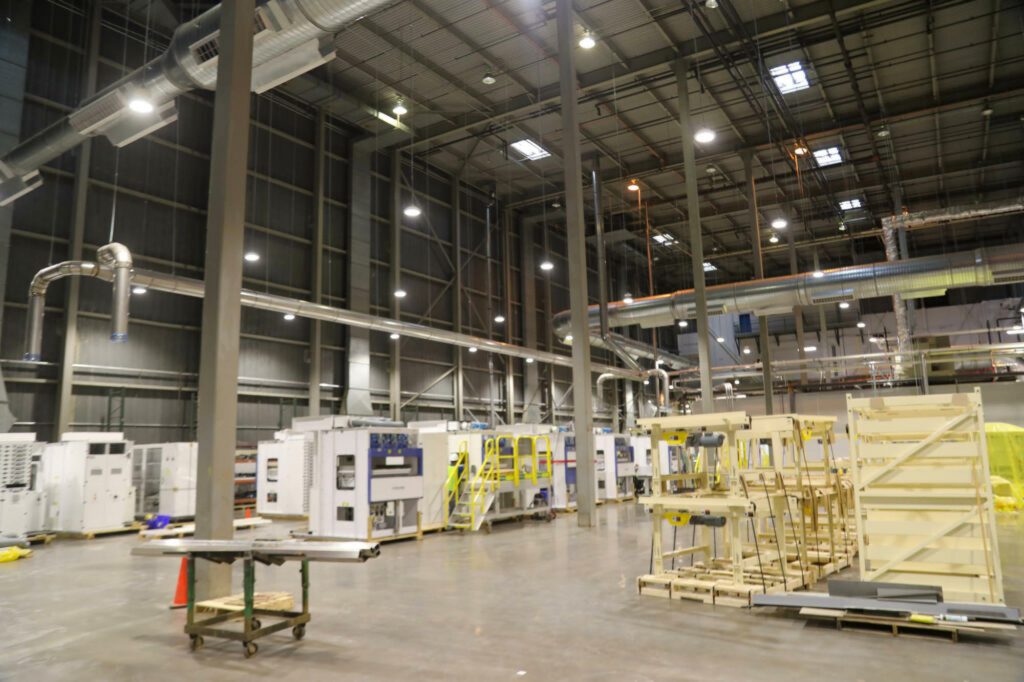Local manufacturer iM3NY is looking for a federal loan to increase production of batteries.
iM3NY utilizes battery technology developed by Shailesh Upreti, the chairman of the board of iM3NY and founder of C4V, and Stanley Whittingham, a distinguished professor of chemistry at Binghamton University and an inventor of the lithium-ion battery. C4V, as stated by their website, is an “intellectual property company,” with the expertise of maintaining the patented discovery of lithium-ion batteries.
Last year, iM3NY started producing batteries inside a former IBM facility located on the Huron campus. The manufacturer recently submitted an application to the U.S. Department of Energy for a $700 million loan to build a new facility 12 times bigger than its current space.
If iM3NY are chosen, this loan could have large impacts on battery technology and industry, Upreti emphasized, including through building iM3NY’s brand reputation with “strategic customers.”
“It would help with efficient scale as a function of time,” Upreti wrote in an email. “We have a limited window to capture certain market verticals, and having such a friendly loan line available to us would allow us to go after high-growth verticals rapidly and capture market share. While we scale new technology, our customers downstream also look into the supplier capabilities and scale planning so they can accordingly make investment decisions.”
The loan is being issued by New York Senator Chuck Schumer. Binghamton has already begun using the $100 million that Schumer delivered for its New Energy New York battery hub. Schumer said manufacturing is the appropriate next step, according to WIVT news. The batteries are specifically intended for use in large commercial vehicles, as well as home energy storage.
Upreti explained the significance of chemical advances on the growth and success of the industry.
“We see affordability and safety becoming key choices for selection by end users, which would push nontraditional and phosphate-based chemistry among the top choices for vehicle manufacturers in future,” Upreti wrote. “In addition, due to several federal programs incentivizing manufacturers as well as consumers, there is a strong drive to build a local supply chain ecosystem. Which means we would not only see new technologies being adopted but also manufactured here in the [United States].”
Upreti previously said that as iM3NY continues to develop these growing markets, the company may expand into passenger EV’s and energy storage for offshore wind or solar arrays. However, C4V — which focuses mainly on the research and development aspects of this industry — has only 45 people employed compared to iM3NY’s over 70 workers. This giga factory has the potential to employ between 2,500 and 3,000 workers.
Whittingham explained why the demand for some of this technology is so high.
“There is lots of interest in the phosphate technology that iM3NY plans to use because it contains none of the expensive metals such as cobalt and nickel,” Whittingham said. “It is also safer than the NMC oxide technology.”
According to WIVT, the overall cost of the project will be around $1.2 billion — with any remaining funding coming from other banks and private equity investors. Upreti said that, after the new giga factory is completed, the preexisting smaller one will be converted into a giga lab, where different processes and advancements may be tested.
Shelby Pappas, a sophomore majoring in integrative neuroscience, explained why she feels lithium-ion batteries should be manufactured around Binghamton.
“The lithium batteries originated here and it would be cool if they continued to be produced here,” Pappas said. “Plus, it would be beneficial for the Binghamton economy.”
Victoria Ziccardi, a freshman majoring in environmental science, agreed that the loan could benefit the economy in Binghamton and surrounding areas.
“I think it would be great for the Binghamton economy to develop these batteries here,” Ziccardi said. “It would be environmentally beneficial to keep the batteries being made here, where they originated.”



